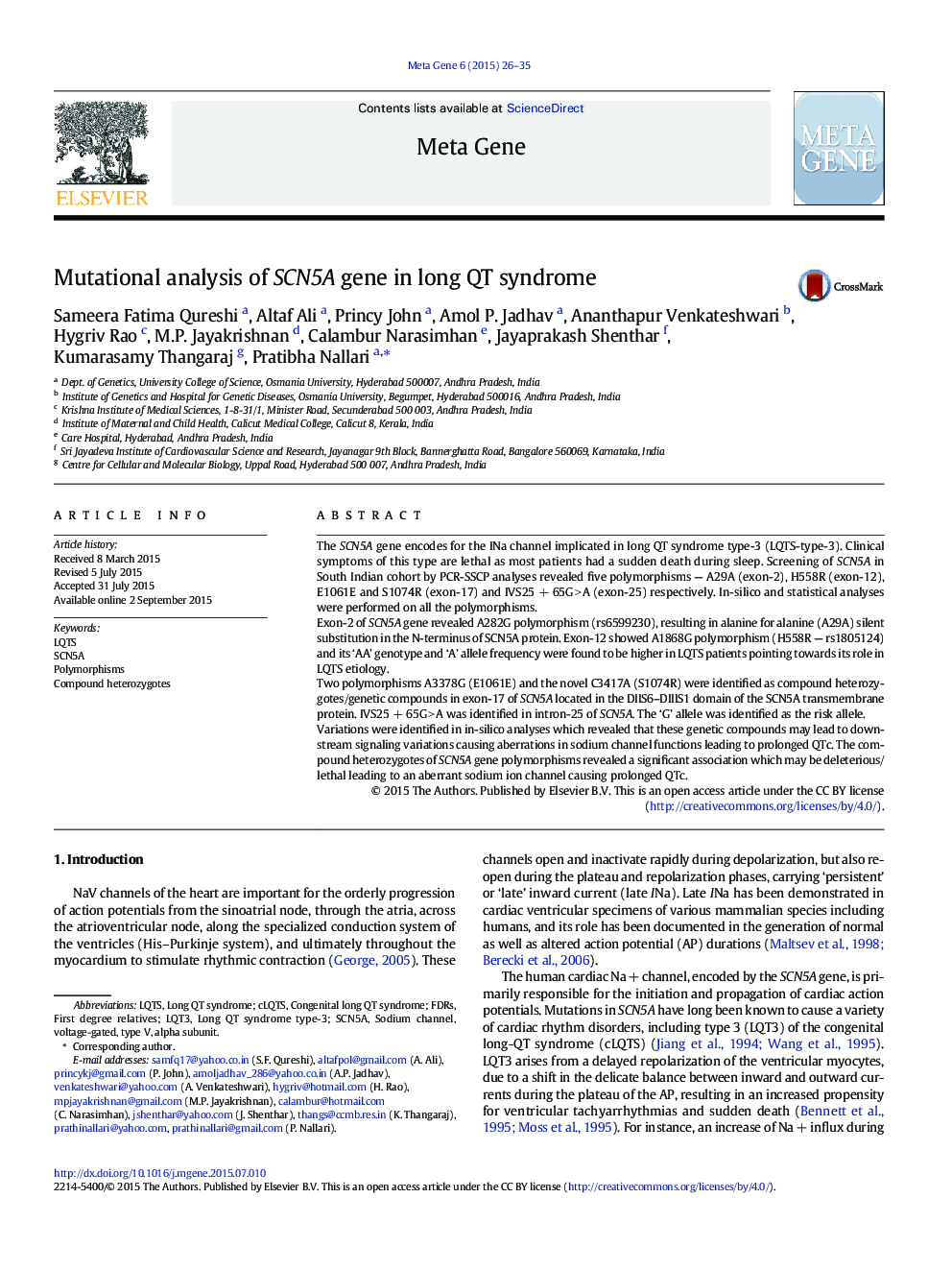| Article ID | Journal | Published Year | Pages | File Type |
|---|---|---|---|---|
| 2058580 | Meta Gene | 2015 | 10 Pages |
•Screening of SCN5A in South Indian cohort showed 4 reported and 1 novel polymorphism.•Compound heterozygotes found to have a significant association with LQTS•Genetic compounds maybe deleterious leading to an aberrant sodium ion channel
The SCN5A gene encodes for the INa channel implicated in long QT syndrome type-3 (LQTS-type-3). Clinical symptoms of this type are lethal as most patients had a sudden death during sleep. Screening of SCN5A in South Indian cohort by PCR-SSCP analyses revealed five polymorphisms — A29A (exon-2), H558R (exon-12), E1061E and S1074R (exon-17) and IVS25 + 65G > A (exon-25) respectively. In-silico and statistical analyses were performed on all the polymorphisms.Exon-2 of SCN5A gene revealed A282G polymorphism (rs6599230), resulting in alanine for alanine (A29A) silent substitution in the N-terminus of SCN5A protein. Exon-12 showed A1868G polymorphism (H558R — rs1805124) and its ‘AA’ genotype and ‘A’ allele frequency were found to be higher in LQTS patients pointing towards its role in LQTS etiology.Two polymorphisms A3378G (E1061E) and the novel C3417A (S1074R) were identified as compound heterozygotes/genetic compounds in exon-17 of SCN5A located in the DIIS6–DIIIS1 domain of the SCN5A transmembrane protein. IVS25 + 65G > A was identified in intron-25 of SCN5A. The ‘G’ allele was identified as the risk allele.Variations were identified in in-silico analyses which revealed that these genetic compounds may lead to downstream signaling variations causing aberrations in sodium channel functions leading to prolonged QTc. The compound heterozygotes of SCN5A gene polymorphisms revealed a significant association which may be deleterious/lethal leading to an aberrant sodium ion channel causing prolonged QTc.
